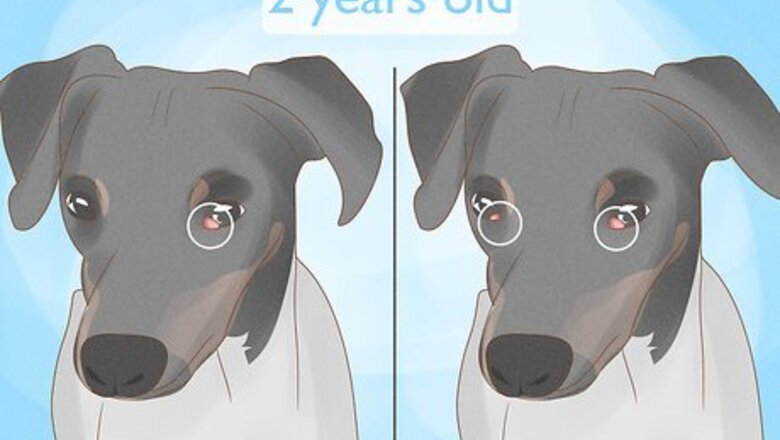
views
What is cherry eye?

Cherry eye is the prolapse of a dog's tear gland in their third eyelid. Like many other animals, dogs have a third eyelid that is located in their lower eyelid. This third eyelid gives their eyes added protection and also produces most of their tears. Normally, the tear gland in their third eyelid is firmly attached, keeping it in place. Dogs with cherry eye have a weaker attachment between the gland and the third eyelid, which can cause it to dislodge and bulge out of place. It's common for cherry eye to occur in one or both eyes. Dogs usually develop cherry when they are 2 years old or younger, but it's also possible for dogs to experience the condition later in life.
Symptoms of Cherry Eye
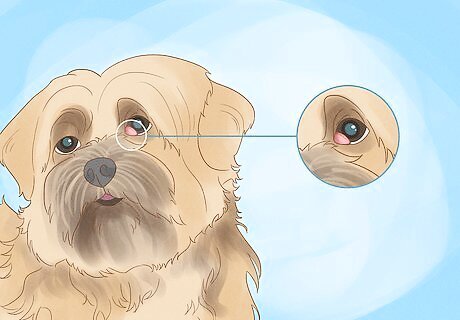
Red, swollen tissue on the corner of the eye. If you notice a small, pinkish-red bulge on the inner corner of one or both of your dog's eyes, this is most likely cherry eye. The bulging tissue may only be visible sometimes. In other cases, the tissue may cover a large portion of your dog's eye and remain visible at all times.

Watery eyes. Officially known as epiphora, cherry eye can cause your dog to produce excessive tears. This will make their eyes appear watery or as if they are constantly crying.
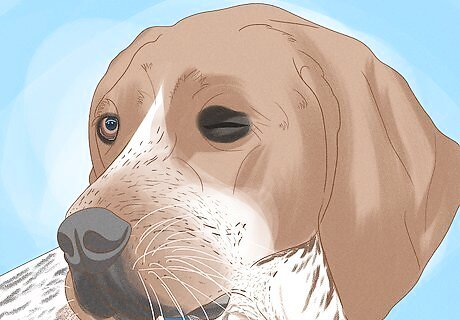
Squinting. This is a sign that your dog is experiencing pain in their eye. If this is accompanied by a small, red mass at the inner corner of one or both of their eyes, your dog likely has cherry eye.
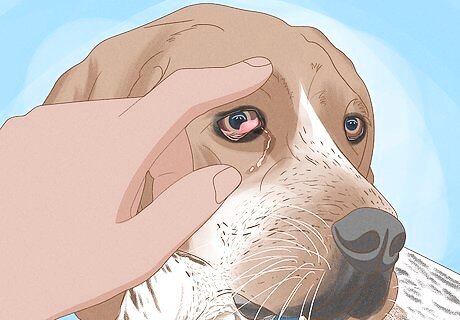
Pus and drainage from the eye. Sometimes, cherry eye can cause other infections in your dog's eye. If that's the case, you might notice yellow mucus or pus draining from their eye.
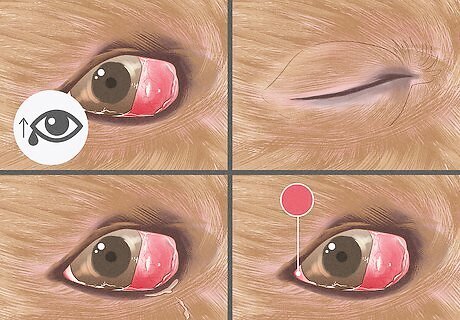
Dry eye (Keratoconjunctivitis sicca). If cherry eye is not treated in its early stages, it can eventually cause chronic dry eyes, a serious condition in dogs. Symptoms of dry eye include: Lack of tear production Persistent squinting Pus-like discharge Red eyes
How did my dog get cherry eye?

Dogs who experience cherry eye often have a genetic predisposition. There isn't a specific cause (or prevention method), but these dogs usually have a weaker attachment between the lower inner rim of their eye and their third eyelid gland. This makes it easier for the gland to prolapse. Dogs that have a genetic predisposition to cherry eye include: Cocker spaniels Boston terriers Bloodhounds Bulldogs Shih Tzus Lhasa Apsos Beagles Boxers
When should I take my dog to the vet?
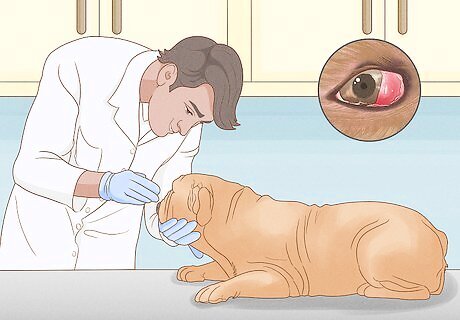
If your dog shows symptoms, take them to the vet as soon as possible. Surgery is required to treat cherry eye in pretty much all cases, so it's important that you schedule an appointment with your veterinarian. They'll be able to give you an official cherry eye diagnosis and advise what type of surgery will be the best fit for your dog. Veterinarians don't recommend trying to treat cherry eye at home. Though they may prescribe a topical ointment to soothe your dog's eye, this will only be a temporary solution to relieve their discomfort.
Surgical Treatment Options for Cherry Eye
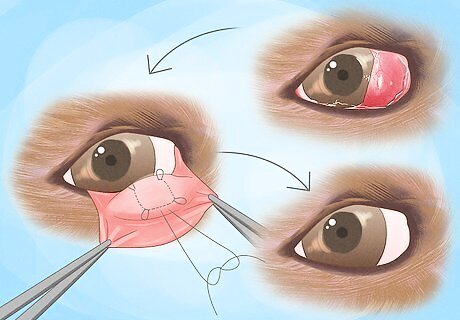
In most cases, your vet will recommend the tucking method. During this surgery, your veterinarian will place a stitch through the gland to guide it back to its correct location in the third eyelid. This stitch will permanently remain in your dog's eye, holding the gland in its proper place. This surgery is sometimes called "tacking." Though this surgery is the most common and successful treatment method, sometimes, the stitch doesn't hold permanently. In that case, your dog may have to undergo additional surgeries to get another stitch in their eye.

Your vet may suggest imbrication if the tucking method doesn't hold. In this surgery, your veterinarian will take out a small portion of tissue located above your dog's third eyelid gland. Once the tissue is removed, your vet will close the gap left in its place by adding small stitches that tighten the connection between the gland and the third eyelid. These stitches will dissolve later on, but the attachment should remain secure. This surgery is relatively new compared to other methods. Your dog may experience swelling at the sight of the stitches as they dissolve. Though surgeries are usually successful, it's possible the stitches won't hold, causing the gland to prolapse again.

Vets only recommend removing the gland in extreme, recurrent cases. This was once the most popular option, but it's fallen out of favor in recent years. Vets rarely perform the procedure due to the third eyelid gland's importance to a dog's overall eye health. If the gland is removed, your dog's ability to produce tears will be significantly lessened. This can result in medical complications like dry eye, which can be costly to treat and impact your dog's sight. The third eyelid gland produces 30 to 40% of your dog's tears, which is why veterinarians try to avoid removing it if at all possible. Your veterinarian may still recommend this treatment if they have exhausted all other treatment options.
How much does cherry eye surgery cost?
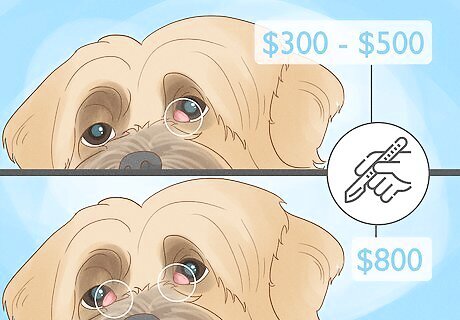
The cost of surgery usually ranges from $300 to $800. If your dog has cherry eye in only one eye, surgery will likely cost between $300 and $500. The surgery may go up to $800 if your dog has the condition in both eyes. This price estimate includes tests and blood samples to determine if your dog has the condition, anesthesia, surgery, and postoperative medication. The cost may also vary depending on the rate and experience of your veterinarian. If you have pet insurance, the cost of surgery may be covered if it's not a pre-existing condition. If you aren't able to afford cherry eye surgery, you have options to reduce the cost. You may try working out a payment plan with your vet or applying to get help from a veterinary-bill fund.
Surgery Recovery and Postoperative Care
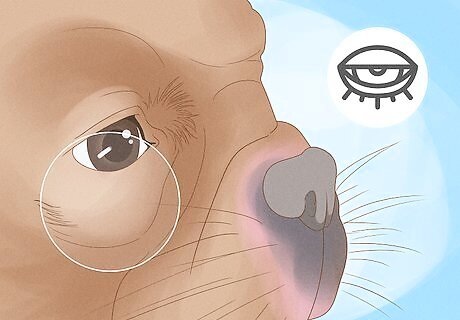
Your dog may experience swelling in their eye. After the surgery, it's common for dogs to experience swelling at the site of the surgery for about a week. After that, the swelling should go down and their eye should return to normal. If the swelling doesn't go down after a week or your dog's condition worsens, call your vet and schedule a check-up. They'll be able to determine the care your dog needs to get better.
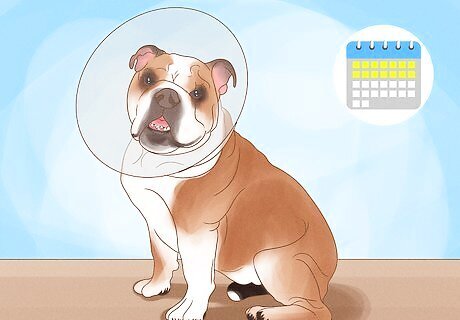
Your dog will need to wear an Elizabethan collar for 1-2 weeks. An Elizabethan collar, A.K.A. an E-collar, is a cone-shaped collar your dog wears around their neck. This prevents them from scratching or messing with their eye as it heals from surgery. Though wearing one may be a little bit frustrating for your dog, it will help them recover as soon as possible!
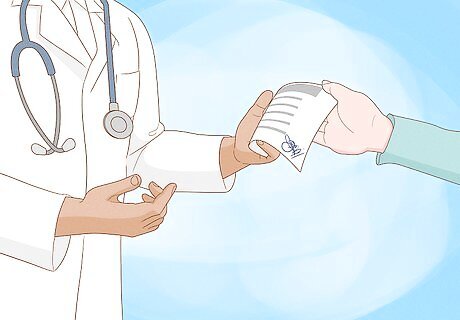
Your vet may prescribe pain medication. To help your dog recover from their operation, your vet will likely prescribe a topical solution as well as oral pain medication. To help your dog heal, make sure to follow your veterinarian's specific instructions regarding dosage and the length of time your dog take the medication.
Potential Complications
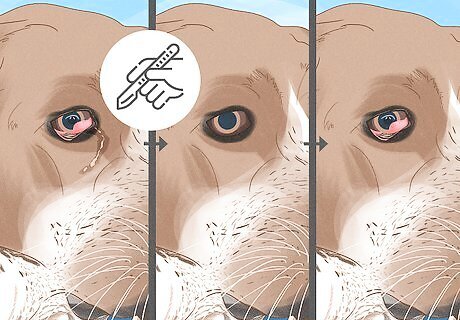
Cherry eye may reoccur despite your dog's surgical treatment. Sometimes, dogs need more surgeries to completely treat the condition and prevent it from reoccurring. If your pup only had cherry eye in one of their eyes, they may go on to experience it in the other eye later on in life. If you notice cherry eye reoccurring or catch signs of it in your dog's opposite eye, contact your veterinarian to make sure they get treatment. If the cherry eye comes back, you may be tempted to ignore it due to the cost of treatment. It's best to get your dog the treatment they need, though, as untreated cherry eye can lead to costly conditions like dry eye (Keratoconjunctivitis sicca).
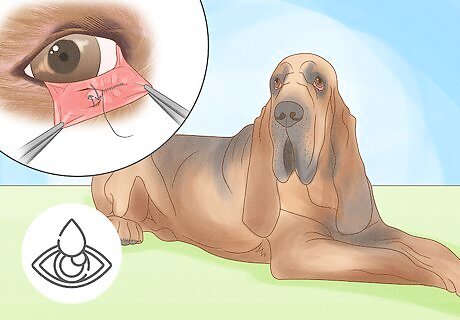
If your dog's third eyelid gland is removed, they may develop dry eye. In serious, reoccurring cases, sometimes a veterinarian will decide to remove the third eyelid gland. If that's the case, your dog may develop dry eye (Keratoconjunctivitis sicca) due to a lack of tear production. If your dog develops dry eye, your veterinarian will prescribe lifelong medication, like artificial tears, to help them with their condition.




















Comments
0 comment